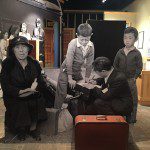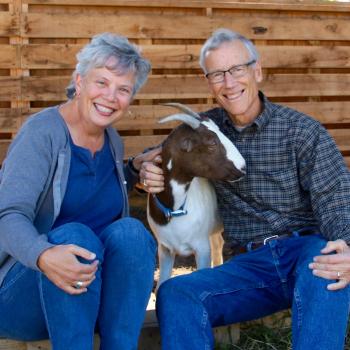 When was the last time you wrote a letter, an honest-to-goodness letter with paper and pen and stamp? In this age of Facebook and email, it’s probably been quite a long time ago.
When was the last time you wrote a letter, an honest-to-goodness letter with paper and pen and stamp? In this age of Facebook and email, it’s probably been quite a long time ago.
My friend Mary Jedlicka Humston is making up for the rest of us. For 30 years she’s kept up a handwritten correspondence with Mary Potter Kenyon, letters that have chronicled their lives, loves, and losses. The two of them have been exchanging letters at least three times a week during those decades, which adds up to more than 4,300 letters each. It’s a remarkable relationship, one that is chronicled through their jointly authored book Mary and Me: A Lasting Link Through Ink.
The two met in 1986 when they lived next door to each other in Iowa City, Iowa. Mary Kenyon left town a year later, but a bond was formed that has been sustained through these letters. The two women have found that putting their feelings down on paper is more meaningful to them than digital forms of communication.
For many years, their friendship was primarily through these letters, with only the occasional face-to-face visit. That changed in 2011 when they traveled to a writing conference together and shared a hotel room. From that point on, their friendship deepened as they shared subjects they hadn’t discussed before. But the letters still kept flying back and forth between Iowa City, where Humston still lives, and Manchester, Iowa, where Kenyon resides.
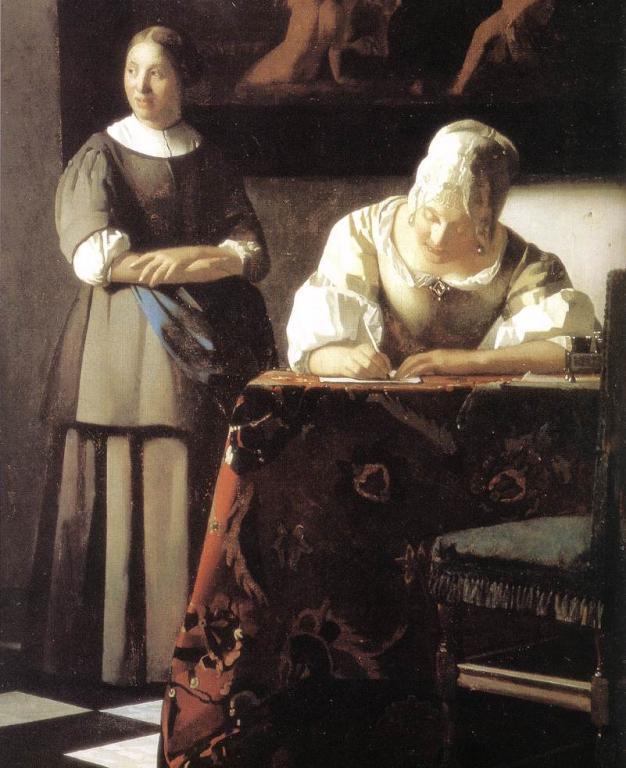
The book draws heavily on their correspondence, but has been re-shaped to fit various themes, including In Sickness and In Health, Losses, Faith, and Mothers. Their two voices alternate, creating a counterpoint of reflections on universal and personal topics.
Some of the strongest parts of the book detail their struggles, particularly when Kenyon writes about her difficulties in forming female friendships and Humston describes her struggles with crippling anxiety. Through it all they support and love each other, providing a contemporary model of a much older form of friendship, one primarily nurtured through letters.
The book also includes essays contributed by other writers on the theme of friendship. I was asked to write one of these, which you’ll find below. (Between the time I wrote this and the book’s publication, I’ve become a member of a different church, but the volunteer work I describe goes on, just in a slightly different form.)
I’m grateful to Humston and Kenyon for including my essay in their book, and also for their honesty, wit, and wisdom in Mary and Me: A Lasting Link Through Ink.
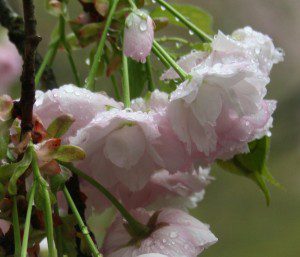
Cherry Blossom Friendships
by Lori Erickson
For much of my life, I’ve thought my most valuable friendships were those that have lasted a long time. But through my volunteer work as a Healing Touch practitioner, I’ve come to realize that some of my most important friendships are all the more meaningful because they are short-lived. I’ve come to think of them as my Cherry Blossom Friendships—beautiful, fleeting, and full of wonder.
Healing Touch is a form of complementary medicine that has many similarities to the ancient Christian practice of laying-on-of-hands for healing. In my church, we offer it as a form of ministry. Most of the people we see have been diagnosed with cancer. They come to our healing room overlooking a courtyard garden for a weekly session in the midst of their chemotherapy or radiation treatments.
It’s not surprising that friendships often form in this context. What typically takes years during the course of a normal friendship can happen very quickly under these circumstances. This is especially true for those who do not receive the cure they desperately seek. Despite their valiant struggles to live, their cancer worsens and their medical treatments lose their effectiveness. Healing Touch often becomes even more important to them as they enter Hospice care.
Each time this happens, I question the wisdom of doing volunteer work that stands a good chance of making me extremely sad. When I attend the funeral of someone I’ve worked with, I sometimes toy with the idea of finding another form of service, like walking dogs at the animal shelter or reading to schoolchildren—-activities that aren’t likely to end with me in a church singing “Amazing Grace” through my tears.
Then I go right back to volunteering in our healing ministries program, because these friendships have taught me more than almost any other relationships I’ve had.
The first person I got close to in this way was Diane, who came to see me for Healing Touch while undergoing treatment for breast cancer. We were strangers when we were introduced, but we soon became dear friends. Nearly every week we would meet in the healing room at our church. Before we started our session together we’d visit, first about inconsequential things but increasingly about more personal matters.
Every time I saw her, she found positive things to focus on. No matter what bad turn her medical condition had taken, she always found something to be grateful for. At first I thought she was perhaps putting on a brave front, but over time I came to see that her sense of gratitude and optimism were utterly genuine.
That optimism came, I think, both from her deep faith but also from her knowledge that she was surrounded by people who loved her. I noticed that she rarely used the word “I” in relation to her medical condition. It was always, “We’re going to be trying a new treatment next week,” or “We’re making progress on this.” She knew that she wasn’t going through her journey alone.
I was also struck by the way in which Diane cared for me. In a situation in which technically I was the one serving her, she gave as much to me as I did to her. In that room we shared a great deal, I think in part because we had no other ties other than that hour per week. We didn’t know anyone else in each other’s families or social circles. We could complain, share worries, and rejoice in each other’s joys knowing that what we talked about was confidential.
As Diane approached the end of her life, she asked if I would speak at her funeral. I said yes, of course, but I also worried privately over what I would say. I had only known Diane for a short portion of her life, and I had never even seen her outside the walls of the healing room.
At the same time, I felt that I did know her in all the ways that mattered. I knew firsthand her courage, her vitality, her warmth. And as I stood in the church in front of hundreds of people, I realized I knew many of them too. Because of all those conversations with Diane, I knew about her children and grandchildren, their foibles, quirks and histories. I knew about her siblings and book group members and her old friends from college days. I didn’t know their faces, but I knew what they meant to Diane.
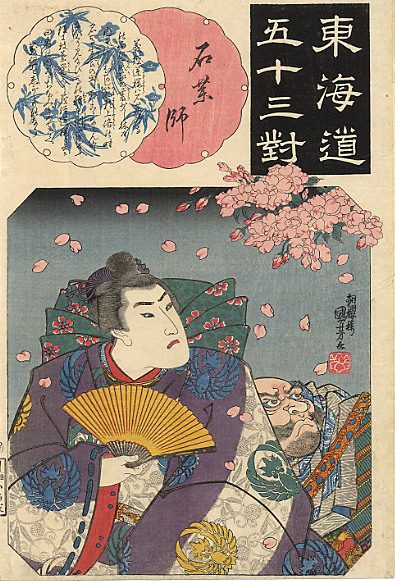
In my eulogy I spoke about how much I had learned from Diane and I told them how much she loved them all. After the service, many of them introduced themselves to me at the reception. I delighted in meeting these people I’d known only through her stories. They felt like old friends to me—for after all, any friend of Diane’s was a friend of mine.
Today when I work in our church’s healing room, I sometimes think of a trip I took to Japan during cherry blossom season, that brief period in spring when a gauzy shroud of pink covers parks and gardens. While there I learned that cherry blossoms are more than just flowers to the Japanese. They are an excuse to celebrate, for families and friends meet under the flowering trees to drink, eat and socialize. Even more important, they are a symbol for the transitory nature of life. The delicate cherry blossom, here today and fluttering to the ground tomorrow, is a poignant symbol of how beautiful and how brief existence is.
Diane was the first of my cherry blossom friendships, but not the last. Each one reminds me of walking underneath the blooming cherry trees in Kyoto, their petals falling like snow.

